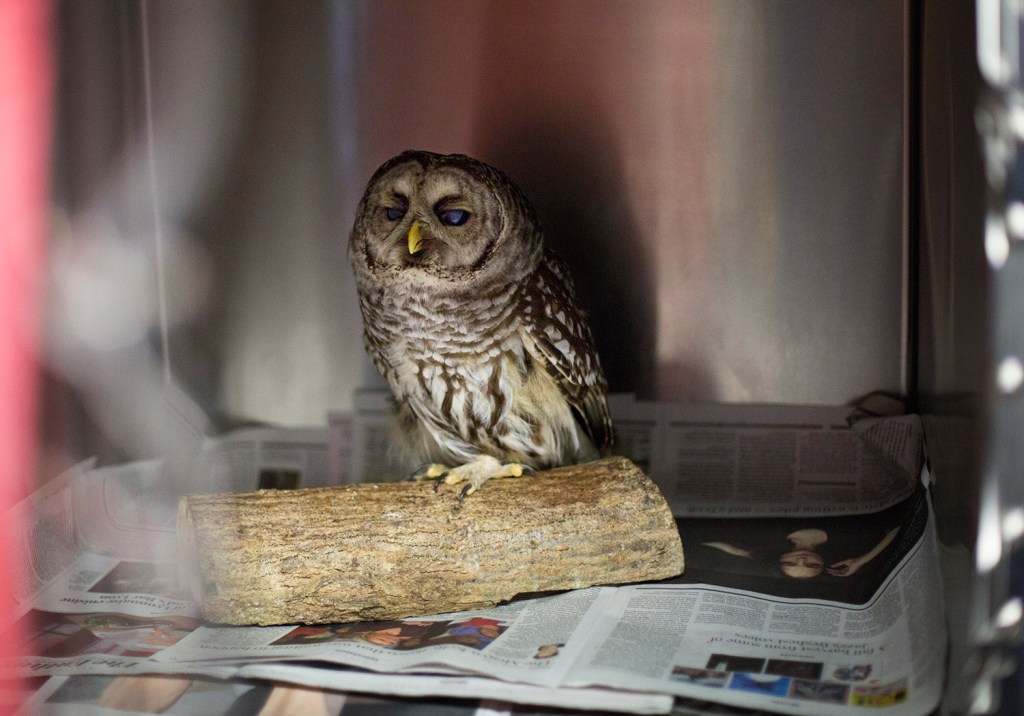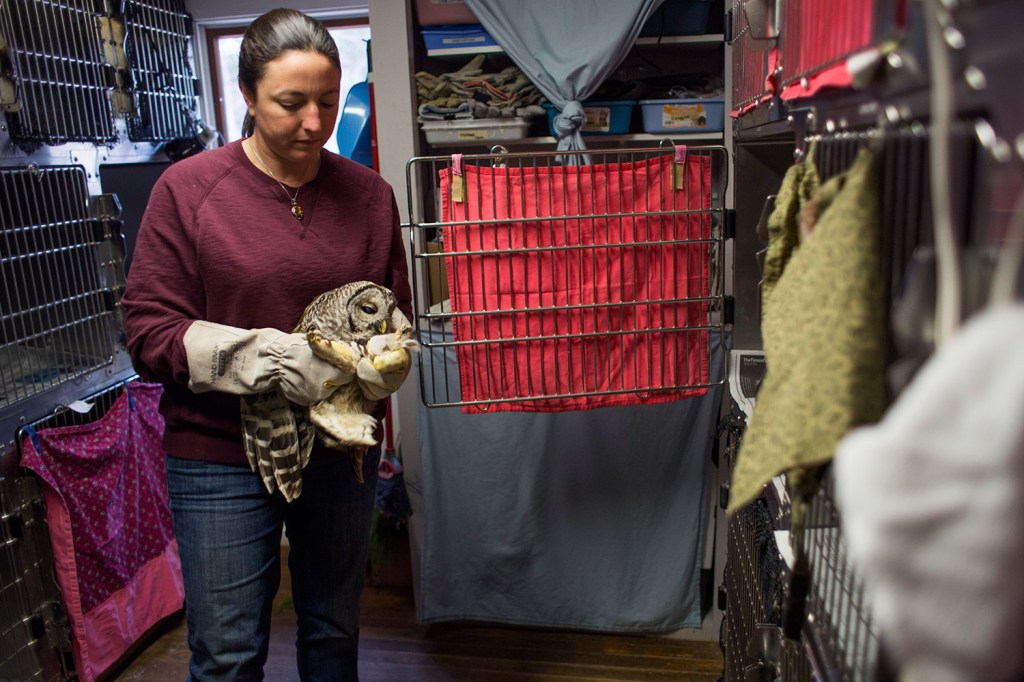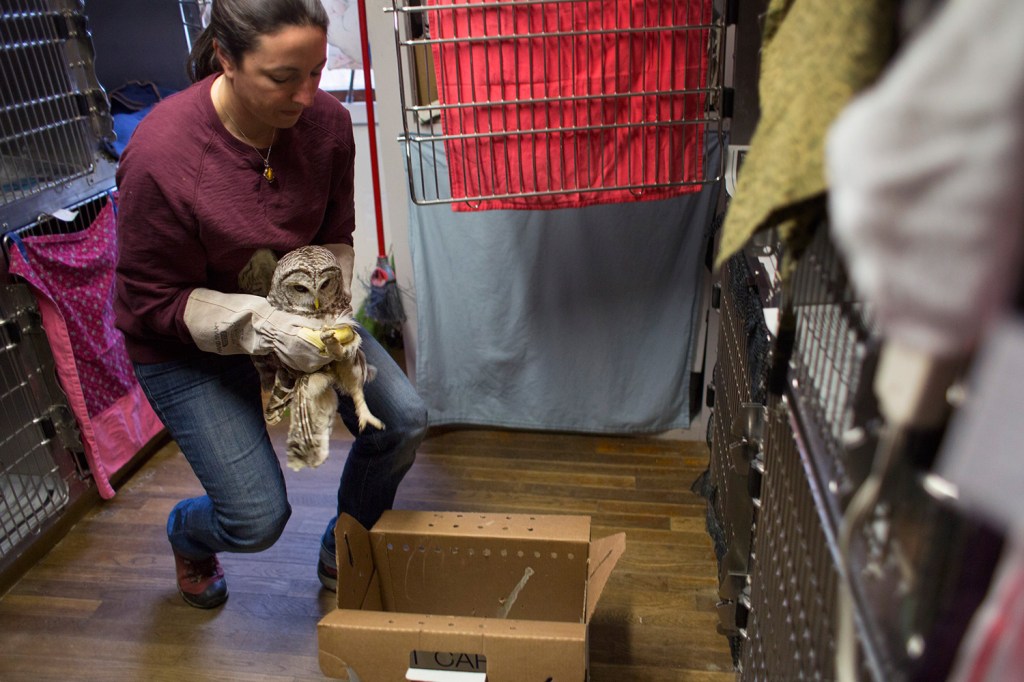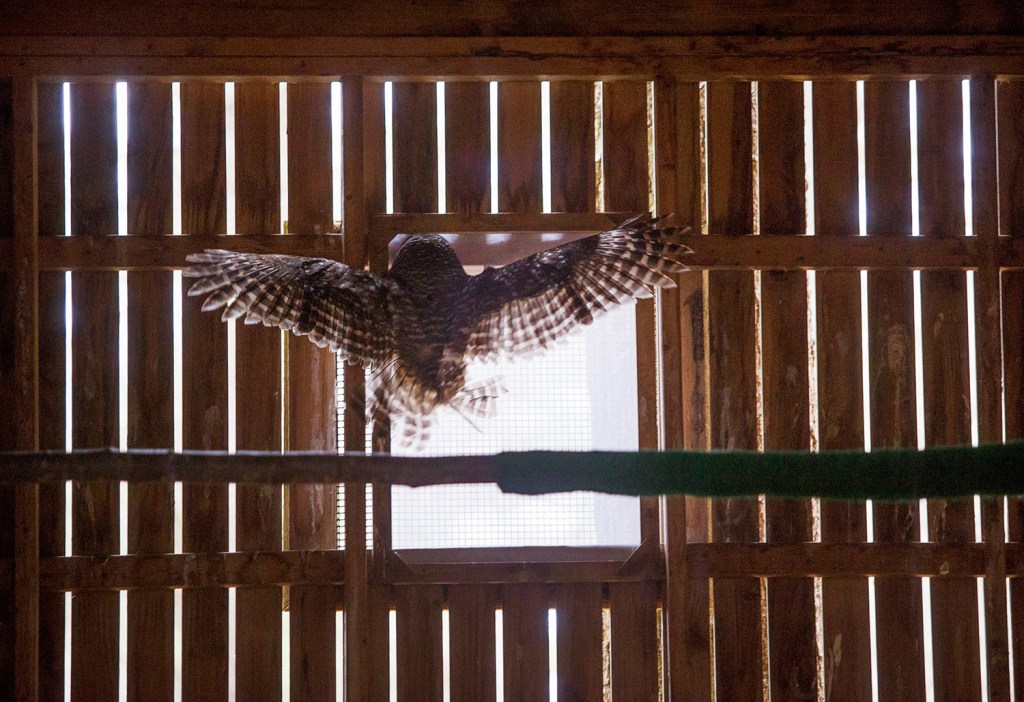YORK — Wildlife rehabilitation centers in Maine are seeing a significant increase in the number of owls that have been injured by vehicles and believe the spike stems from the boom in the state’s population of squirrels and other rodents.
In the past six weeks, the Center for Wildlife in York admitted 12 injured owls, roughly as many as the center sees in an entire winter.
“It has been an extraordinary year, from what we’ve seen. It’s all about that predator-prey relationship, that food-chain connection,” said Kristen Lamb, executive director of the center, Maine’s largest wildlife rehabilitation facility.
At Avian Haven in Freedom, a bird rehabilitation center just east of Waterville, co-owner Diane Winn said 49 injured barred owls were admitted between Oct. 1 and Dec. 13 – compared with nine during the same period last year. Ninety percent of the owls were struck by vehicles or found on the roadside, she said.
The dozen owls admitted to the Center for Wildlife have had broken wing bones and broken feathers; one had a fractured collar bone. Most have had damaged eyes, said Shelley Spanswick, the center’s medical clinic director.
Injured owls are typically brought to rehabilitation centers in colder months when small mammals are harder for the raptors to find and stalk, particularly when snow cover helps hide mice and squirrels.
Barred owls are one of the most common owls in Maine. Erynn Call, the state’s raptor biologist, said barred owls are more likely to hunt in roads in the winter, making them vulnerable to being struck by vehicles. Great horned owls, which also are found throughout Maine, are better hunters in deep snow and tend not to hunt along roads as often.
Call said an increase in acorns and pine cones in 2017 led to a boom in the rodent population this year – which in turn probably led to a good breeding year for owls.
“Every five to six years there is a great boom in the mast crop,” Call said, referring to the production of acorns by oak trees. “This, of course, leads to a population eruption in small mammals, which is the likely increase for owl populations. It’s nothing to be alarmed about. When you have an increase in prey you have an increase in young predators, like owls.”
The state does not track owl-car collisions, as it does with deer and moose. Call said the state does not conduct owl surveys and does not have population estimates for any of the 11 species of owls found in Maine, but she said the number of wildlife admitted to rehabilitation centers is a good index of fluctuations in those populations.
Other wildlife rehabilitation centers in New England also have seen an increase in injured owls this fall.
Since the beginning of August, the Tufts Wildlife Clinic at the Cummings School of Veterinary Medicine in Massachusetts has treated 111 barred owls. In a typical year, the clinic sees fewer than 100 injured barred owls, said Patrick Collins, executive director of public relations at Tufts University.
And at the New England Wildlife Center in Weymouth, Massachusetts – which also oversees the Cape Wildlife Center on Cape Cod – eight barred owls have been admitted in the past four weeks, twice as many as the two centers see in a typical year, said Greg Mertz, chief executive officer of the New England Wildlife Center.
If the number of injured owls admitted to the Center for Wildlife in York continues at the current pace, Lamb said they will treat a record number in their 32-year existence. The most owls the center has admitted in a fall and winter season was 59 in 2007-08, including 48 barred owls.
Spanswick urges people to slow down, especially driving through forested areas or along fields, and refrain from throwing food out the window because it draws rodents to the road.
“If I see a mouse run across the road, I slow down because I know a raptor might be flying after it,” Spanswick said.
Deirdre Fleming can be contacted at 791-6452 or at:
dfleming@pressherald.com
Twitter: FlemingPph
Send questions/comments to the editors.








